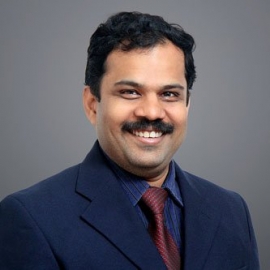Squint Treatment
Corrective glasses,
treatment and
surgery options
for perfect vision
SQUINT TREATMENT
Highlights
- Suture-less or no-stitch surgery using fibrin glue
- Highly qualified & experienced doctors
- Successful Strabismus squint corrective surgery
- Use of latest technology equipment
- Safe and effective
- Low risk of any serious complications
Doctors
Dr Rani Menon, our founder, is an eminent and renowned eye surgeon in South India. She is a veteran treating in all types of eye-related problems and diseases, and specializes in Cataract, Glaucoma, and Squint correction.

What is a Squint?
Squint is a medical condition in which there is a misalignment because of which both eyes do not look in the same direction. Squint may be permanent (constant) for some, and for others, it may be intermittent, present during the daytime only, and the rest of the time, the eyes may look straight or normal. Squint eye is seen commonly in children and may also occur in adults. When the eyes are not aligned properly, each eye focuses on different objects and sends a signal to the brain. When the brain perceives these two different images it creates confusion. In the case of children, they might interpret the image coming from one eye only and ignore what the other eye sees. The suppressed image from the deviated eye results in the poor development of vision in that eye resulting in a condition known as amblyopia.
In adults, it creates double vision, because adults cannot ignore images from both eyes and it annoys them and interferes with their work. Squint can be classified according to the direction of the squinting eye:
- An eye that turns inwards is called esotropia
- An eye that turns outwards is called exotropia
- An eye that turns upwards is called hypertropia
- An eye that turns downwards is called hypotropia
Children and adults may develop squint for different reasons. While the exact cause for squint is not known, it may occur due to a disorder of the eye, poor eye muscle control, brain, or faulty nerve signals. A family history of squint, long sight, short sight, astigmatism, childhood illnesses like measles or chickenpox, and nerve damage during delivery of a baby damaging the nerve can also be possible causes of squint.
Symptoms of Squint
- Deviation of the eyes
- Blurred vision
- Double vision
- Difficulty reading
- Tilting head to see clearly
- Misalignment of the eyes
- Lazy eyes (amblyopia), the brain ignores the signals sent by the eye in this condition.
Treatment & Services
Squints, if treated early, can be corrected and the treatment has been proven successful among young children. Some of the treatments available are:
- Using vision glasses to correct any vision problems or refractive errors.
- Performing eye exercises to bring back eye coordination
- Injecting the eye muscles with medication to realign by weakening the muscles.
- Corrective surgery is also known as strabismus surgery usually involves tightening or moving more than one outside eye muscle, helping to move the eyes and change their position.
Constant squint is a condition wherein the eye turn is not occasional. It must be treated without delay for the proper vision. If treatment is done early, patching and the use of glasses may help during the initial phase. If not, one might have to rely on vision therapy or surgery.
In Intermittent squint, the eye does not turn all the time and the brain receives stimulus for developing a binocular vision (using two eyes simultaneously)

Advantages
- Early detection helps prevent vision loss
- If treated properly, vision can be restored
- Depth perception can be corrected with the surgery









